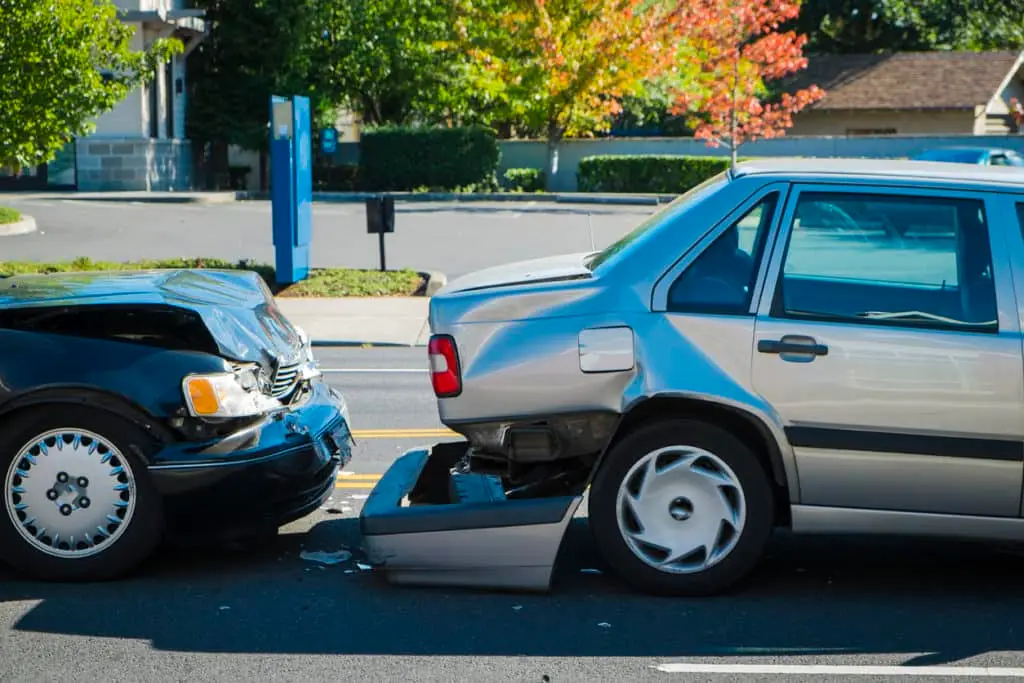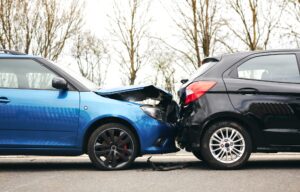Table of Contents
ToggleRear-End Collision Injuries and How You Can Recover

Rear-end crashes happen often. In 2021, Los Angeles County had 13,207 rear-end collisions that caused injury or death. Of these, 4,411 rear-end collisions occurred in the city of Los Angeles.
These collisions have a high injury rate but a low fatality rate. In 2021, only 0.66% of rear-end collisions were fatal. For comparison, 2% of head-on collisions were fatal. In other words, head-on collisions are three times more likely than rear-end collisions to cause death.
Read on to learn about the injuries a rear-end collision can cause and how to recover from them.
How Do Rear-End Collisions Happen?
Rear-end collisions happen when a trailing vehicle hits the back of a leading vehicle. Rear-end car accidents happen for many reasons, but in most cases, the fault for a rear-end collision falls on the driver of the trailing vehicle.
Statistics from California’s Transportation Injury Mapping System (TIMS) show the leading cause of rear-end collisions is unsafe speed. In fact, speeding causes the overwhelming majority – over 72% – of rear-end crashes in Los Angeles County.
The second-most common cause of rear-end crashes is intoxicated driving. TIMS attributes over 8.6% of rear-end crashes to drunk or drugged driving.
Surprisingly, TIMS cites tailgating as a factor in only 5.5% of rear-end crashes.
The Physics of Rear-End Collisions
In a rear-end collision, the front vehicle’s occupants experience different forces than the rear vehicle’s occupants. But occupants of both vehicles get subjected to forces according to Newton’s laws of motion.
According to physics, an object in motion remains in motion until acted on by an external force. When you ride in a vehicle, your body’s speed matches the vehicle’s speed. When your vehicle collides with another vehicle, your body wants to keep moving in the same direction and speed as before the crash.
If you’re wearing a seat belt during your accident, the seat and seat belt exert forces on your body to hold you in the car. If you’re not wearing a seat belt, you’re either ejected from the car, or you get rattled around inside the car, hitting the dashboard, steering wheel, seat, and other surfaces until your body stops.
Forces You Experience in a Rear-End Collision
In the leading vehicle, you get hit from behind. Your car jerks forward, and you get pushed back into the seat. You will likely slam on your brakes to avoid getting pushed into the vehicle ahead of you.
As you hit your brakes, your body whips forward. Your airbag will probably not deploy because the airbag’s sensors sit at the front of the car and only sense front-end collisions.
If you have your seat belt on, your body whips forward until you hit your seat belt. If you do not wear a seat belt, your body whips forward unrestrained until it hits the steering wheel, dashboard, or windshield.
In the trailing vehicle, you get hit from the front. Your car suddenly stops, throwing your body forward. In the trailing vehicle, the airbag probably deploys because a front-end collision sets off the airbag sensors.
Your body whips forward, hitting your seat belt and airbag. If you have an older vehicle or do not wear a seat belt, your body will hit your steering wheel, dashboard, or windshield.
As your car comes to a stop, you fall back into your seat. You experience a whipping motion just like the occupants of the leading vehicle. But the motions occur in the reverse order.
Common Rear-End Collision Injuries
Only a small percentage of rear-end collisions cause death. This happens largely because both vehicles were moving in the same direction at the instant of the crash. The common direction reduces the energy transferred between the vehicles during the collision.
But the forces involved in a crash can still injure the occupants. The back-and-forth motions you experience in a rear-end collision cause some characteristic injuries, including:
Whiplash
In a collision, your body does not behave as a rigid unit. Different parts of your body experience different forces and slow at different speeds.
Your seat belt restrains your body, but not your head. In a rear-end collision, your head continues to whip back and forth even after your body hits your seat belt. Your neck can experience enormous strain as your ten-pound head whips back and forth.
Whiplash happens when these forces injure your neck. In minor cases, whiplash only involves strained muscles or tendons or sprained ligaments.
Concussion
A concussion happens when your brain rattles around in your skull. Your brain suffers mild damage from the pressure of the cerebrospinal fluid (CSF) that surrounds and cushions it. Your brain swells, and you experience symptoms like headache, confusion, and clumsiness.
Spinal Cord Injury
The whipping motion of your head hyperextends, then compresses your neck. These forces can damage the discs in your neck or even fracture a vertebra. A damaged disc or fractured vertebra can compress or sever your spinal cord. An injured spinal cord can cause paralysis, loss of sensation, muscle weakness, and radiating pain.
Chest Injury
Seat belt injuries frequently happen after a rear-end collision. When your chest hits the seat belt, you can bruise or strain your chest muscles or fracture a rib.
Recovering from Rear-End Collision Injuries
Rear-end collision injuries vary in their recovery times. Fortunately, you can recover from most minor rear-end crash injuries without surgery. These minor injuries can still cause severe pain and prevent you from working during your recovery.
You can recover with rest within two months after your accident when you have:
- Neck strain or sprain
- Concussion
- Chest strain
- Fractured rib
Your doctor may prescribe anti-inflammatory drugs to help your body heal and reduce pain. You may need physical therapy to recover your strength and dexterity after you recover.
More serious injuries like a damaged disc or fractured vertebra might require surgery to repair. After your surgery, you might need months of rest and physical therapy. Even with surgery, you might always suffer chronic symptoms and ongoing disabilities from your injuries.
A spinal cord injury is the most serious injury you can suffer from a rear-end collision. Nerves do not regrow, so your injuries will be permanent.
Getting Compensation for Your Recovery After a Rear-End Collision
According to TIMS, the trailing driver bears liability for most rear-end collisions. If your accident resulted from someone else’s negligent actions, you can seek compensation to pay for your treatment, therapy, and medication as you recover. Contact our car crash attorneys to discuss your collision and how to seek compensation for your losses.
Contact Our Car Accident Law Firm in Los Angeles, CA
If you were injured in an accident in Los Angeles, CA or you lost a loved one and you need legal assistance, please contact us to schedule a free consultation. One of our Los Angeles car accident lawyers at M&Y Personal Injury Lawyers will get in touch with you soon.
M&Y Personal Injury Lawyers – Los Angeles Office
4929 Wilshire Blvd Suite 960,
Los Angeles, CA 90010
866-864-5477




